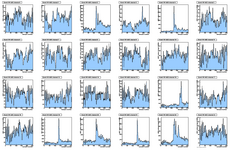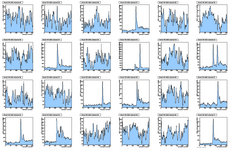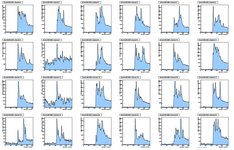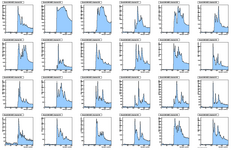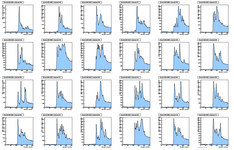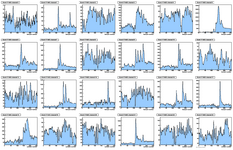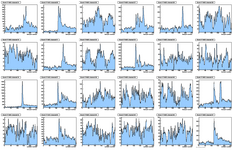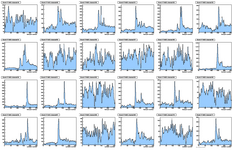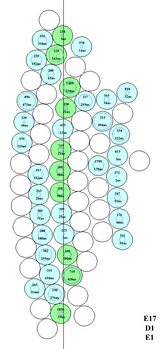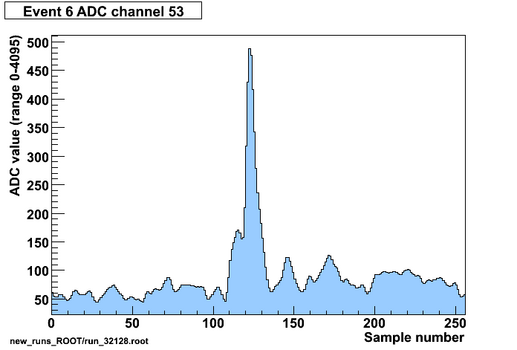Difference between revisions of "CDC events"
| Line 35: | Line 35: | ||
|[[Image:cdc_run_32128_evt_6_ch_53.png|thumb|x350px|event 6 ch 53]] | |[[Image:cdc_run_32128_evt_6_ch_53.png|thumb|x350px|event 6 ch 53]] | ||
|} | |} | ||
| − | What went wrong with ch53? At first glance it looks like the hit signal arrives in sample 119 which is indeed what the tracking software decided. However the fitted track implies that the hit signal should have arrived in sample 110 (similar time to channels 13 and 67). In ch53 the adc value went above the first threshold ( | + | What went wrong with ch53? At first glance it looks like the hit signal arrives in sample 119 which is indeed what the tracking software decided. However the fitted track implies that the hit signal should have arrived in sample 110 (similar time to channels 13 and 67). In ch53 the adc value went above the first threshold (161) in sample 113. This threshold was based on pedestal = 61 = the mean adc value in samples 0-99. A local pedestal was then calculated as the spot value approximately 3 samples before from the threshold crossing. This adc value was 118 (much higher than normal) and then the threshold crossing was re-found at sample 119. The local pedestal is unusually high because the adc value is higher than normal and its upward slope is unusually small, presumably due to a large noise fluctuation lying beneath the hit signal. |
| + | |||
Conclusion: if the local pedestal is very different from the default event pedestal there could be a problem with the hit time. | Conclusion: if the local pedestal is very different from the default event pedestal there could be a problem with the hit time. | ||
Revision as of 15:32, 8 May 2013
What went wrong with ch53? At first glance it looks like the hit signal arrives in sample 119 which is indeed what the tracking software decided. However the fitted track implies that the hit signal should have arrived in sample 110 (similar time to channels 13 and 67). In ch53 the adc value went above the first threshold (161) in sample 113. This threshold was based on pedestal = 61 = the mean adc value in samples 0-99. A local pedestal was then calculated as the spot value approximately 3 samples before from the threshold crossing. This adc value was 118 (much higher than normal) and then the threshold crossing was re-found at sample 119. The local pedestal is unusually high because the adc value is higher than normal and its upward slope is unusually small, presumably due to a large noise fluctuation lying beneath the hit signal.
Conclusion: if the local pedestal is very different from the default event pedestal there could be a problem with the hit time.
